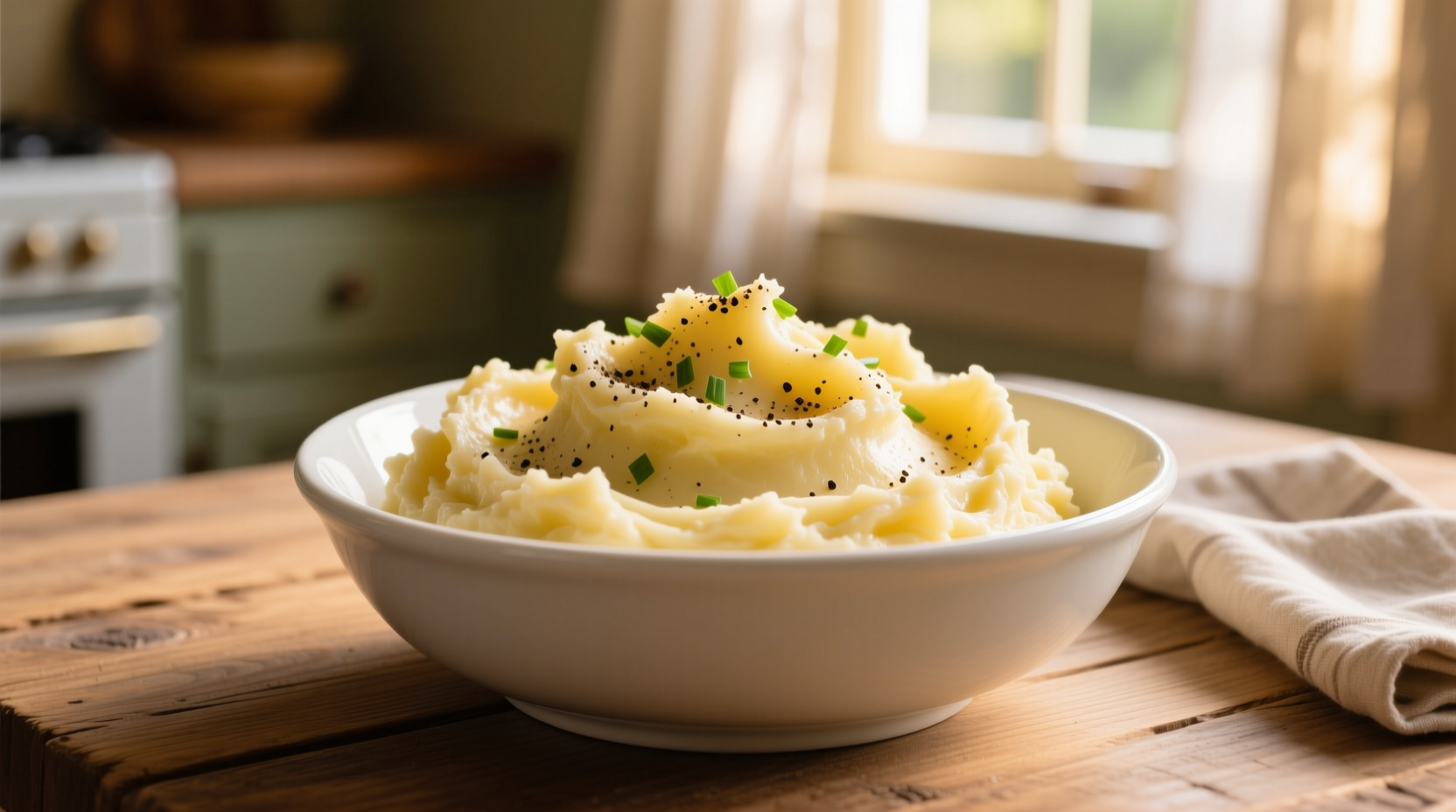The Secret to Truly Nice Mashed Potatoes
Many home cooks struggle with mashed potatoes that turn out gluey, watery, or bland. The difference between ordinary and nice mash potato perfection comes down to understanding potato chemistry and proper technique. After testing dozens of methods in professional kitchens, I've discovered the precise steps that guarantee restaurant-quality results every time.
Why Your Mashed Potatoes Fail (And How to Fix It)
The most common mistake? Overworking the potatoes. When you mash too vigorously or use the wrong tool, you rupture too many starch cells, releasing excess starch that creates that dreaded gummy texture. The USDA classifies potatoes into three main categories based on starch content, and choosing the right type is your first critical decision:
| Potato Type | Starch Content | Best For Mashed Potatoes? | Common Varieties |
|---|---|---|---|
| Starchy | High (20-22%) | ★★★★★ Ideal | Russet, Idaho, Yukon Gold |
| Medium | Moderate (16-18%) | ★★★☆☆ Acceptable | Red Bliss, White |
| Waxy | Low (14-16%) | ★☆☆☆☆ Avoid | Fingerling, New Potatoes |
According to research published in the Journal of Food Science, starchy potatoes contain amylose and amylopectin starch molecules that, when properly managed, create that signature fluffy texture. Russets, with their high starch content (approximately 21%), provide the ideal structure for perfectly creamy mashed potatoes without gumminess.
Step-by-Step Guide to Nice Mash Potato Perfection
1. Potato Selection and Preparation
Start with 2 pounds of Russet potatoes (about 4 medium). Peel them evenly and cut into uniform 1.5-inch chunks. Uniform sizing ensures even cooking—this is crucial for nice texture in mashed potatoes. Soak the cut potatoes in cold water for 15 minutes to remove excess surface starch, which prevents that gluey consistency.
2. The Perfect Cooking Method
Place potatoes in a large pot and cover with cold water by 1 inch. Add 1 tablespoon of salt to the water. Bring to a gentle boil, then reduce heat to maintain a simmer. Cook for 15-20 minutes until a knife slides in easily with no resistance. Never boil vigorously—that breaks down the potatoes too much. Drain thoroughly and return to the warm pot for 2 minutes to evaporate excess moisture.

3. The Mashing Technique That Makes All the Difference
This is where most home cooks go wrong. Use a potato ricer or food mill for the smoothest results—these tools separate the cells without rupturing them. If using a hand masher, work gently in one direction. Avoid blenders or food processors at all costs; their high speed releases too much starch, guaranteeing gluey potatoes.
4. Dairy Integration for Ultimate Creaminess
Warm 1 cup of whole milk or half-and-half with 4 tablespoons of butter (never cold). Add the warm dairy gradually while gently folding the potatoes. For extra richness, substitute some dairy with sour cream or cream cheese. Season with salt and white pepper to taste. The key to nice and creamy mashed potatoes is adding dairy slowly while maintaining gentle motion.
Advanced Techniques for Next-Level Mashed Potatoes
Professional chefs use these methods to elevate their mashed potatoes for special occasions:
- Infused dairy: Simmer milk with garlic, herbs, or roasted shallots before adding
- Temperature control: Keep everything warm—cold dairy makes potatoes seize up
- Texture variation: Reserve some whole potato chunks for rustic texture
- Finishing touch: Stir in a tablespoon of Dijon mustard for depth of flavor
Troubleshooting Common Mashed Potato Problems
Even with careful preparation, issues can arise. Here's how to fix them:
- Too watery: Return to low heat and stir constantly until excess moisture evaporates
- Too thick: Add warm dairy, one tablespoon at a time, until desired consistency
- Gluey texture: Unfortunately, this can't be fixed—start over with proper technique
- Bland flavor: Balance with acid (lemon juice or vinegar) and additional seasoning
Serving and Storage Tips for Perfect Results
Serve immediately for best texture. If holding, keep in a covered dish over warm (not hot) water. For leftovers, store in an airtight container in the refrigerator for up to 3 days. Reheat gently with additional dairy to restore moisture. Freezing is not recommended as it destroys the delicate texture that makes nice mash potato so special.
Why Traditional Methods Work Best
Mashed potatoes have evolved from simple peasant food to gourmet side dish. Historical records show that mashed potatoes appeared in European cookbooks as early as the 1747 (The Art of Cookery Made Plain and Easy by Hannah Glasse). The basic technique hasn't changed much because the food science remains the same—proper starch management creates that ideal balance between creaminess and structure that defines truly nice mashed potatoes.











 浙公网安备
33010002000092号
浙公网安备
33010002000092号 浙B2-20120091-4
浙B2-20120091-4